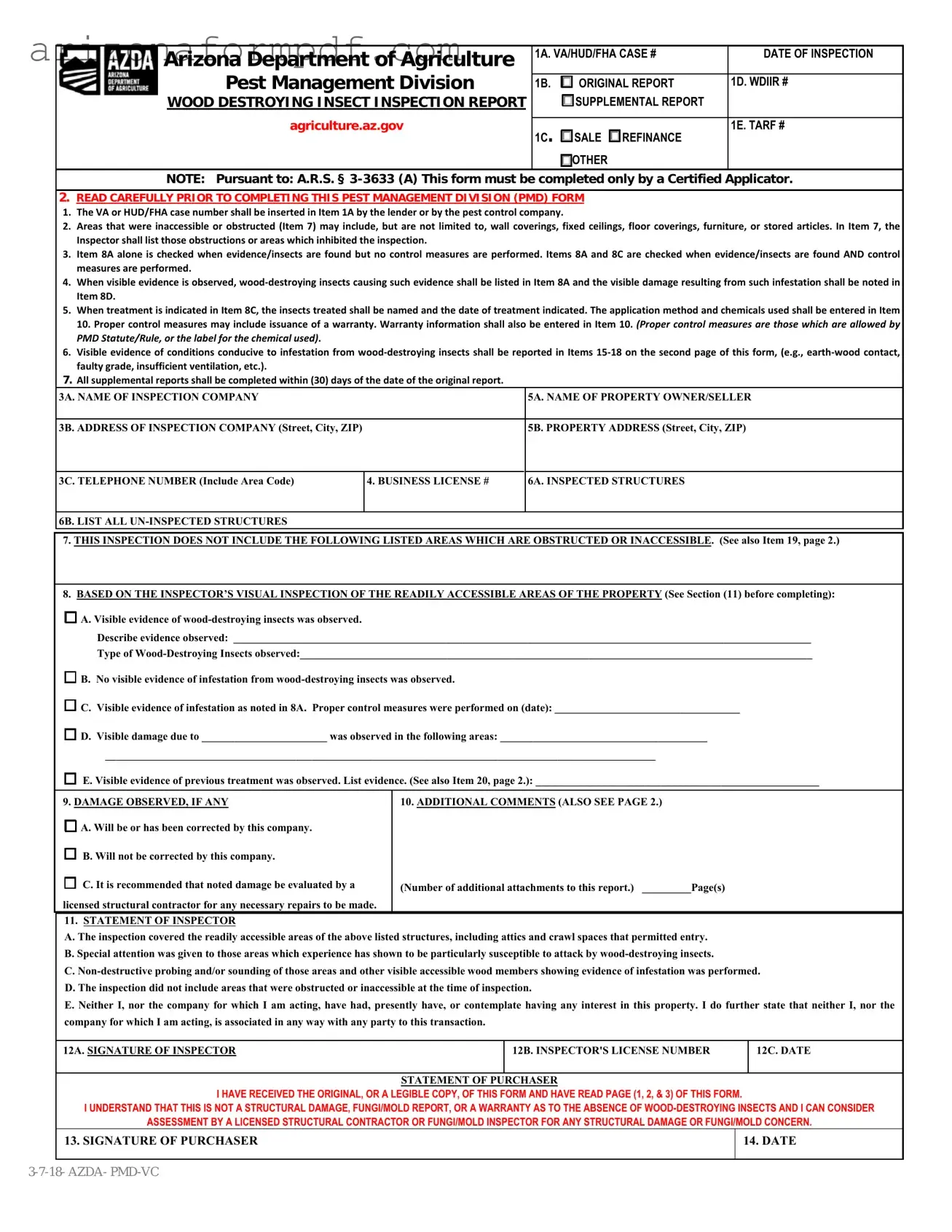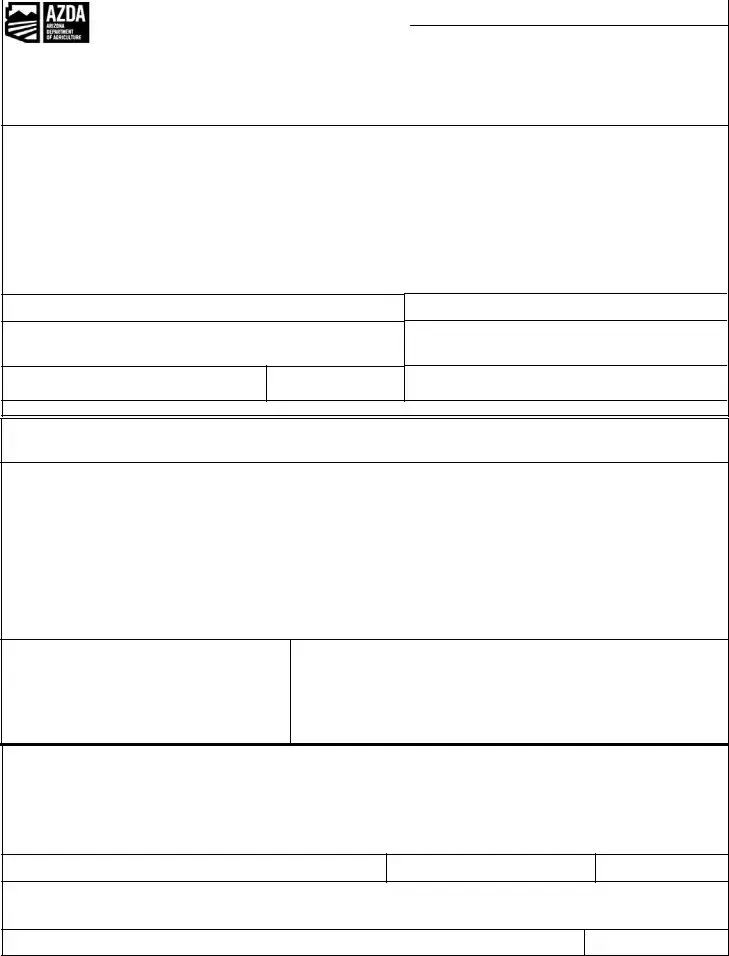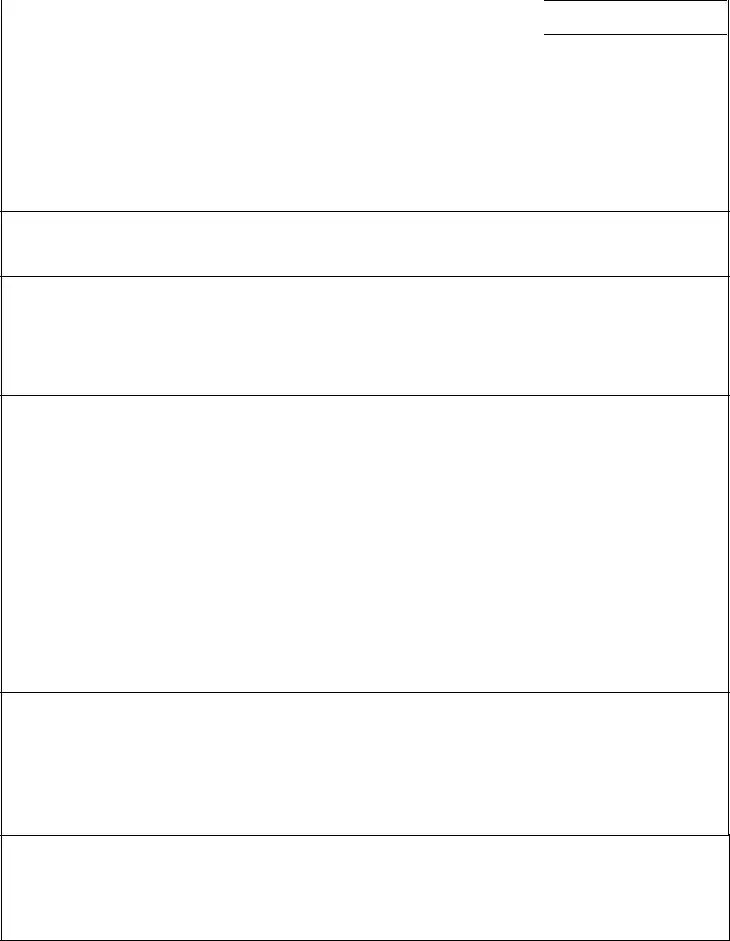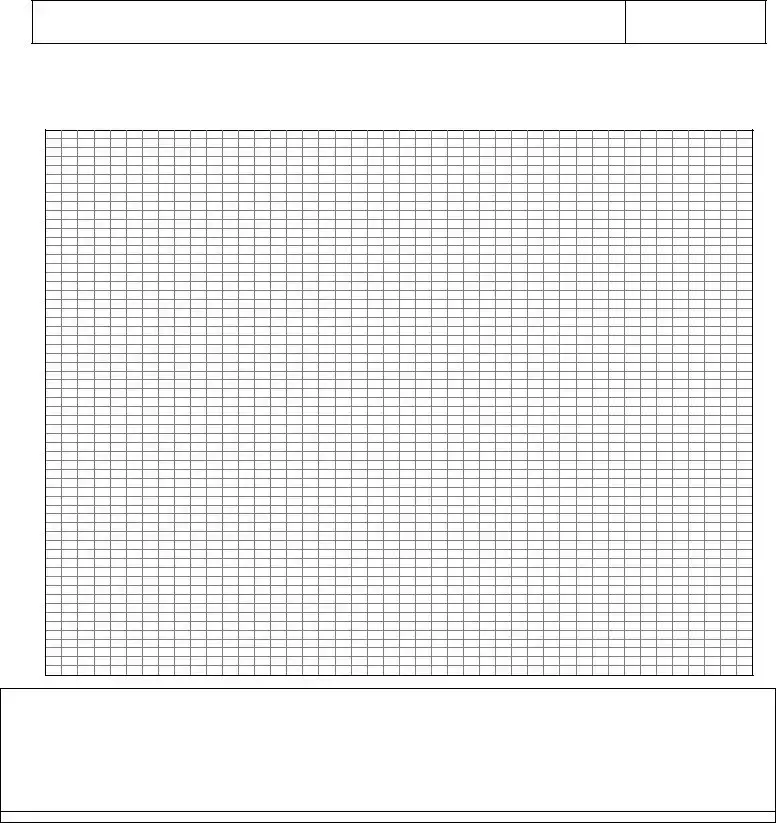What is the WDIIR Arizona form?
The WDIIR Arizona form, or Wood Destroying Insect Inspection Report, is a document used to report the findings of a pest inspection conducted by a certified applicator. It assesses the presence of wood-destroying insects such as termites and provides details about any visible damage or conditions conducive to infestation. This form is essential for real estate transactions, particularly for VA, HUD, or FHA loans.
Who is authorized to complete the WDIIR form?
Only a Certified Applicator, who has received the necessary training and licensing, is permitted to complete this form. This ensures that the inspection is performed professionally and that the findings are accurate and reliable.
What information must be included in the WDIIR form?
The form requires several key pieces of information, including the VA/HUD/FHA case number, the date of inspection, the names and addresses of both the inspection company and the property owner, and details about the inspected structures. Additionally, it must document any visible evidence of wood-destroying insects, areas that were inaccessible during the inspection, and any recommended control measures.
What does it mean if evidence of wood-destroying insects is found?
If the inspector finds evidence of wood-destroying insects, they will note the type of insects observed and any visible damage. Control measures may be recommended, and the inspector will indicate whether treatment has been performed. It is crucial for property owners to address these findings to prevent further damage.
What are conditions conducive to wood-destroying insect infestation?
Conditions conducive to infestation may include wood-to-earth contact, excessive moisture, faulty grading, and inadequate ventilation. These factors can create an environment that is favorable for wood-destroying insects. The inspector will report any such conditions in the WDIIR form.
What should be done if areas are inaccessible during the inspection?
If certain areas are inaccessible, the inspector will note this on the form. Common obstructions can include furniture, wall coverings, or fixed ceilings. It is important for property owners to be aware that inaccessible areas may harbor infestations that were not detected during the inspection.
How long does the inspector have to submit supplemental reports?
Supplemental reports must be completed within 30 days of the original inspection report. This allows for any additional findings or treatments to be documented promptly, ensuring that all information remains current and relevant.
What should buyers understand about the WDIIR form?
Buyers should recognize that the WDIIR form does not guarantee the absence of wood-destroying insects. It is an inspection report and not a structural damage or warranty report. Buyers may consider hiring a licensed structural contractor for further evaluation if concerns about structural damage arise.
Can previous treatment information be included in the WDIIR form?
Yes, the form allows for documentation of any previous treatments conducted on the property. However, the inspecting company cannot verify the effectiveness of prior treatments. Buyers should seek confirmation of treatment validity and any existing warranties from the property owner.
What is the significance of the inspector's statement on the form?
The inspector's statement serves as a declaration of their findings and the scope of the inspection. It confirms that the inspection covered accessible areas and that the inspector has no conflicts of interest regarding the property. This statement adds credibility to the report and reassures all parties involved in the transaction.



